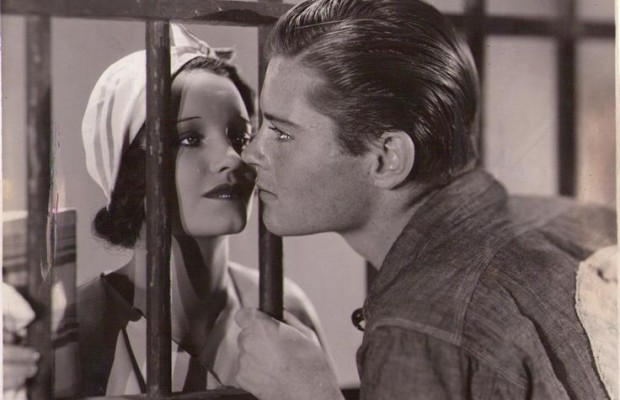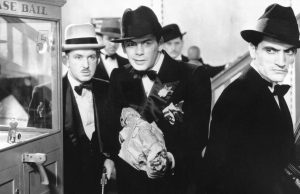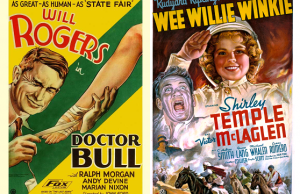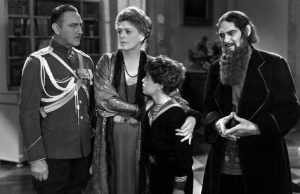Hell’s Highway (1932)

Toronto Film Society presented Hell’s Highway (1932) on Monday, January 12, 1976 in a double bill with School for Scoundrels as part of the Season 28 Monday Evening Film Buff Series, Programme 3.
Production Company: RKO Radio. Producer: David O. Selznick. Director: Rowland Brown. Screenplay: Samuel Ornitz, Robert Tasker, Rowland Brown. Photography: Edward Cronjager. Editing: William Hamilton. Art Direction: Van Nest Polglase, Carroll Clark. Music Direction: Max Steiner. Sound Recording: John Tribby.
Cast: Richard Dix (Frank “Duke” Ellis), Tom Brown (Johnny Ellis), Rochelle Hudson (Mary Ellen), C. Henry Gordon (Blacksnake Skinner), Oscar Apfel (Billings), Stanley Fields (Whiteside), John Arledge (Carter), Louise Carter (Mrs. Ellis), Sandy Roth (Blind Maxie), Clarence Muse (Rascal), Fuzzy Knight (Society Red), Jed Kiley (Romeo Schultz), Bert Starkey (Hype), Bob Perry (Spike), Harry Smith (Buzzard), Edward Hart (Turkey Neck), John Lester Johnson.
“Rowland Brown was a scriptwriter who directed three excellent films within the space of two years–Quick Millions (1931), Hell’s Highway (1932) and Blood Money (1933)–then spent the rest of his career, as the man who once ‘socked a supervisor’, being taken off films and having occasional scripts directed by somebody else. Whether that punch was actual or apocryphal, Brown was clearly the sort of director the old Hollywood had to do down. Not only had he, like William K. Howard (another film-maker whose career was curiously though less spectacularly dampened), the ‘arty’ approach which Hollywood loved to buy in European directors and then iron out under contract, he also had a streak of ruthless unconventionality which didn’t match well with Hays Code and mass consumption. In Blood Money, the classy kleptomaniac played by Frances Dee who goes slumming with the gangsters is not simply the usual sensation-seeking socialite, but unmistakably something of a sexual pervert as well. In Quick Millions, the story of a truck driver (Spencer Tracy) who tries to get rich quick by turning to crime–and in so doing behaves with exceptional ruthlessness–the inevitable comeuppance happens offscreen so laconically, so disconnectedly almost, that there is no real satisfaction for anyone’s sense of moral retribution. In Hell’s Highway, which was released several months before I Am a Fugitive from a Chain Gang and was in fact the first of the chain gang cycle, the message is considerably strengthened by the fact that Duke Ellis is portrayed quite unequivocally and unsentimentally as a criminal rather than as an innocent victim of circumstances….The swift, elliptical yet uncompromisingly direct narrative style evident in Quick Millions and Blood Money is slightly muddied here by cuts presumably effected after the previews (the opening, in particular, has been cut and rearranged), so that there are loose ends and nonsequitors, particularly among the characteristically quirky characterisations; but the mood of the film is undamaged, an impressionistic account of barbarism which owes less to any insistence on brutality (most of the punishment takes place offscreen) than to a totally unforced central image of men caged as animals….With his low-key lighting stressing the fretwork of bars separating the huddled figures from the freedom of the night outside, Brown achieves an astonishingly intense sense of the cruelty of confinement in which the zoo metaphor is beautifully extended during the man hunt of the escape, with the members of the local duck club cheerfully joining the warders in making up a posse and going out for a day`s shooting. Wandering through the idyllic forest glades and valleys, two posse-members come upon a convict crouching with his back to them, call upon him to surrender, and summarily execute him when he does not answer–unaware until he turns to the camera with agonised moans and fingers busily trying to compose a prayer, that he is a deaf-mute; and four boys, scarcely more than children, come across another and open fire. For a moment the wounded man simply stands there in the stillness of the night (it is Johnny, the young brother), then as he turns round and says with quiet astonishment, ‘What did you do that for?’, the children stare for a moment in frightened recognition before running away. It is the sort of moment that marks a great director; more`s the pity that Hollywood didn`t agree.”
Monthly Film Bulletin, April 1974 by Tom Milne
“Roland C. Brown (born Akron, Ohio, November 6, 1900; died Balboa, California, May 6, 1963) had aggressive ideas about how to make movies and reputedly a temper to match. They had to be done his way or not at all. At one point he had punched a producer, making him the hero of the technicians in Hollywood but not endearing him to the executive offices. As a screenwriter he could be hired, for his stories could be turned into product by others and he could be kept at arm’s length; given the creative power of director he could be difficult. Another mark against him–his films didn’t fare well at the box office. Brown depicted the underworld and criminal life with an understanding that, as one film writer darkly hinted, could come only from personal contact, and certainly knew how to put a film together. But his work was as impersonal as a police blotter and cold as a coroner’s report. One critic termed Brown’s concept of crime intellectual. Actually, it was more reportial. Brown had few if any social or political axes to grind, and all he was probably interested in primarily was to spin a story that would keep audiences awake and alert for its duration. In this respect he overestimated the ability or willingness of the average moviegoer of the early Thirties to cope with Brown’s subtleties and nuances.”
Focus on Films, No. 7 by Don Miller












Leave a Reply